A new NASA project lets Instagram users experience the wonders of the universe as seen by the Chandra X-ray Observatory and other space telescopes. It’s an augmented reality (AR) filter called the “Instagram Experience” that takes stunningly beautiful celestial bodies and places them right next to you on camera.
This includes debris from stars that were destroyed in massive supernova explosions and dense clouds of cosmic gas and dust where stars are actively being formed. The AR filter was added to Instagram to celebrate the 25th anniversary of Chandra, NASA’s flagship X-ray space telescope, launched on July 23, 1999.
To use the Chandra Instagram Experience, search for the “NASA ChandraXray” account. Select the Effects Options (the tab that looks like three four-pointed stars) and select the one you want. Then you can either save the effect to your camera and apply it to your Stories, or select the “Try” button for instant access.
Related: Observe the remnants of an 800-year-old supernova and see a ‘zombie’ star
“We are excited to bring data from the universe to Earth in this way,” Kimberly Arcand, visualization and emerging technology scientist at the Chandra X-ray Center, said in a statement. “Allowing people to access cosmic data on their phones and through AR literally puts Chandra’s amazing discoveries at their fingertips.”
What celestial bodies can you bring back to Earth?
The Instagram experience was generated using 3D models created from Chandra data and observations from other telescopes. A bit of mathematical modeling was also necessary to highlight these cosmic muses.
Such 3D modeling of objects, generally considered 2D projections onto the celestial sphere above Earth, has only become possible in recent years thanks to new instruments and techniques. This has led to an explosion in the sophistication of data-driven 3D models of distant celestial bodies.
As this technology has grown, so have the opportunities available to audiences through virtual, extended and augmented reality. This program extends these experiments beyond the solar system. She applies these innovative concepts to the depths of the cosmos.
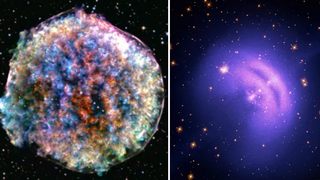
We won’t spoil all the celestial bodies you can discover with this new NASA program. You’ll want to explore on your own. We will nevertheless offer you a few objects to start with.
The Vela pulsar is seen as a stunning pair of purple arcs with a faint bar crossing their center. When you grab this object and drag it from where it resides 1,000 light years away, you will actually see a neutron star that formed during the collapse of a massive star.
Although this neutron star is only about 20 kilometers wide, its mass is about twice that of the sun. This means that the material it contains is so dense that a tablespoon brought back to Earth would weigh more than a billion tons. It’s heavier than Mount Everest.
The Vela pulsar spins so fast that it makes 11 rotations per second. This means it spins faster than the blades of a helicopter. And in doing so, it shoots jets from the poles at about 70% the speed of light. These beams create a sweep of nearly a light year across the universe.
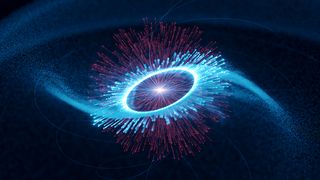
The birth of a neutron star like the one that houses the core of the Vela pulsar is accompanied by a massive cosmic explosion called a supernova that tears a massive star apart as its core collapses.
NASA’s new Instagram experience gives users the chance to explore one of the most striking examples of such a star death.
The Tycho supernova remnant, also known as SN 1572 or B Cassiopeiae (B Cas), is the name given to the wreckage of a supernova located between 8,000 and 10,000 light years from Earth. First spotted in 1572, this supernova is named after one of its discoverers, the Danish astronomer Tycho Brahe. It is believed to be a Type Ia supernova, which is a bit different from the explosions that represent the birth of a neutron star.
Type Ia supernovas occur when stellar remnants called white dwarfs push material away from a companion star. This material accumulates on the white dwarf until it triggers a nuclear explosion which completely destroys the stellar remnant.
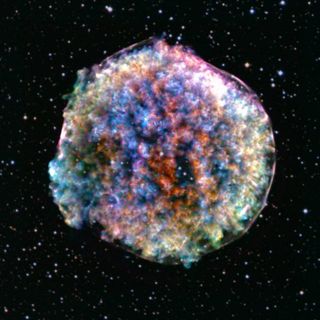
The Instagram experience also features the remains of another dead star. This appears in the form of the Helix Nebula, an expanding cloud of stellar matter located about 650 light years from us in the constellation Aquarius.
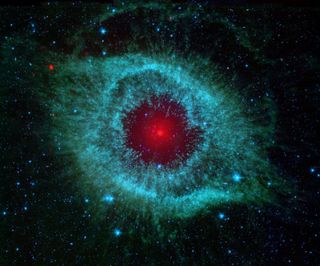
The Helix Nebula is an example of a planetary nebula (which has nothing to do with planets), an expanding shell of gas and dust that was once the outer layers of a dying star. At the heart of this material, marked on Chandra’s image as a purple blob, is an angry-spiking stellar core.
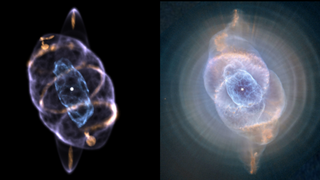
The Cat’s Eye Nebula is also a planetary nebula, although located further away, 3,262 light years from Earth, in the constellation Draco. This planetary nebula can be seen in exquisite detail, revealing twisting spirals of dust and gas and expanding shells of what was once stellar material.
However, it’s not all about the visuals with this NASA Instagram experience. The program also contains cosmic data transformed into sound through a process called “sonification.” This was made possible through a Chandra accessibility program that has been running for four years.
This isn’t the first time NASA has partnered with Instagram to create a space experience. Users of the social media platform have already been able to explore the inner workings of NASA’s mission control, travel to low Earth orbit with the International Space Station (ISS), and traverse Mars with the Perseverance rover.
“These Chandra Instagram experiments are another way to share this cosmic data with the public,” Arcand said. “We hope this will reach new audiences, especially those who like to get their news through social media.”